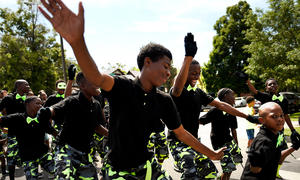article
What We're Reading
Teaching Tolerance loves to read! Check out a few of our favorite diverse books for diverse readers and educators.
The same day a Black man and a Jewish man were voted into the U.S. Senate, a mob toting Confederate and Nazi flags attacked the U.S. Capitol. As you teach about Martin Luther King Jr. ahead of his birthday observation, acknowledge the link between the racism he resisted and the violence we witnessed at the Capitol. These resources will help foster related discussions within the context of U.S. history.
